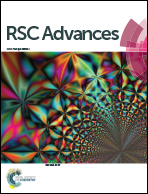Reparative activity of costunolide and dehydrocostus in a mouse model of 5-fluorouracil-induced intestinal mucositis
Abstract
The aim of the study was to investigate the protective effects of costunolide (Co) and dehydrocostus (De) in 5-fluorouracil (5-FU)-induced intestinal mucositis (IM) as well as the potential mechanisms involved. Male Kunming mice were given 5-FU (60 mg kg−1 per day) by intraperitoneal injections for 5 consecutive days and IM was evaluated histochemically. Co (5, 20 mg kg−1) and De (5, 20 mg kg−1) were orally administered once daily for 8 days. Repeated 5-FU treatment caused severe IM including morphological damage, which was accompanied by feeding reduction, body weight loss and diarrhea. Daily intragastric administration of Co or De significantly relieved the severity of IM through promoting intestinal mucosal recovery, inhibiting reactive oxygen species and ameliorating the inflammatory responses. Accordingly, Co and De may be promising therapeutic candidates and clinically used for the prevention of IM during cancer chemotherapy.


 Please wait while we load your content...
Please wait while we load your content...